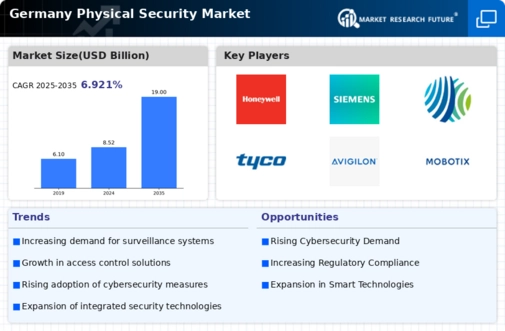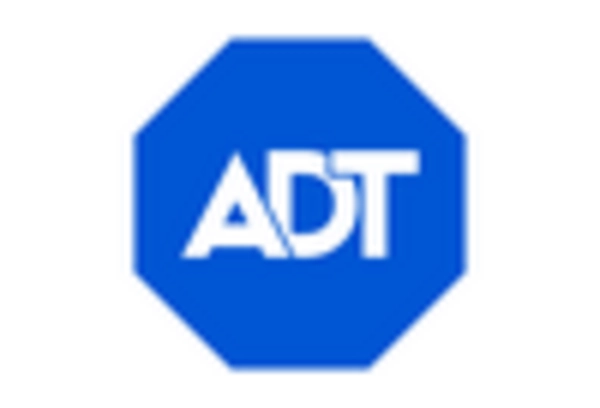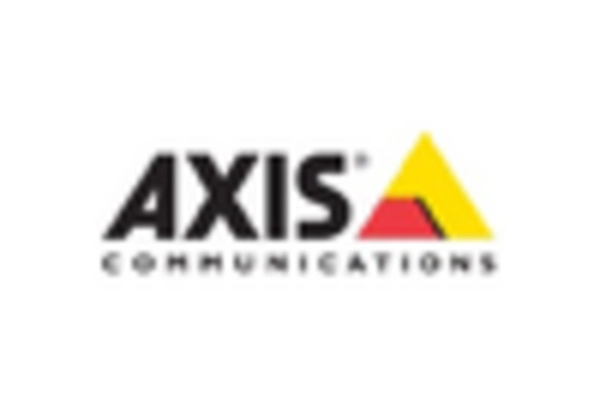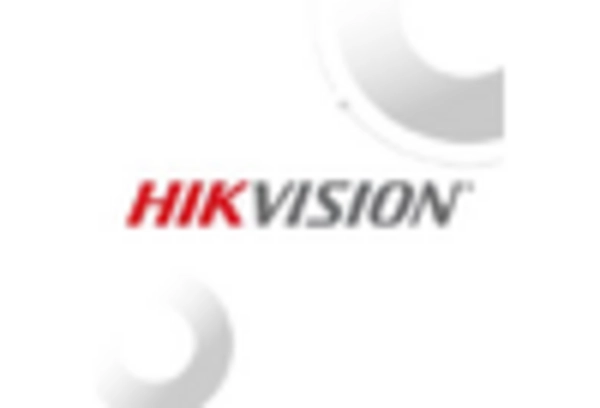Rising Crime Rates
The increasing incidence of crime in urban areas of Germany has heightened the demand for enhanced security measures. Reports indicate that property crimes have surged by approximately 10% over the past year, prompting businesses and homeowners to invest in physical security solutions. This trend is particularly evident in metropolitan regions, where the need for surveillance systems and access control technologies is becoming critical. The physical security market is experiencing a robust growth trajectory as stakeholders seek to mitigate risks associated with theft, vandalism, and other criminal activities. As a result, companies specializing in security services and products are likely to see a significant uptick in demand, further solidifying their position within the physical security market.
Technological Advancements
Innovations in security technology are transforming the landscape of the physical security market. The integration of artificial intelligence (AI), machine learning, and advanced analytics into security systems is enabling more effective threat detection and response. For instance, AI-powered surveillance cameras can analyze footage in real-time, identifying suspicious behavior and alerting security personnel instantly. This technological evolution is expected to drive market growth, with projections indicating a compound annual growth rate (CAGR) of around 8% over the next five years. As organizations in Germany increasingly adopt these advanced solutions, the physical security market is likely to expand, catering to the evolving needs of both commercial and residential sectors.
Growing Awareness of Security Risks
The heightened awareness of security risks among businesses and individuals in Germany is driving the demand for physical security solutions. Recent surveys indicate that over 70% of companies consider security a top priority, leading to increased investments in protective measures. This trend is particularly pronounced in sectors such as retail, finance, and healthcare, where the potential for loss or liability is significant. As organizations recognize the importance of safeguarding assets and ensuring the safety of personnel, the physical security market is likely to benefit from this shift in mindset. The focus on risk management and proactive security strategies is expected to propel market growth, as stakeholders seek comprehensive solutions to address their security challenges.
Regulatory Pressures and Compliance
The regulatory landscape in Germany is evolving, with stricter compliance requirements for security measures across various industries. Organizations are increasingly mandated to implement robust physical security protocols to protect sensitive information and assets. This regulatory pressure is compelling businesses to invest in advanced security technologies and services, thereby driving growth in the physical security market. Compliance with regulations such as the General Data Protection Regulation (GDPR) necessitates that companies adopt stringent security measures, which in turn fuels demand for surveillance systems, access controls, and monitoring solutions. As businesses strive to meet these regulatory standards, the physical security market is poised for continued expansion, reflecting the critical intersection of compliance and security.
Increased Investment in Infrastructure
Germany's commitment to enhancing its infrastructure is influencing the physical security market positively. The government has allocated substantial funds for urban development projects, which include the installation of advanced security systems in public spaces. This investment is not only aimed at improving safety but also at fostering a sense of security among citizens. As a result, the physical security market is witnessing a surge in demand for integrated security solutions, including video surveillance, alarm systems, and access control technologies. The anticipated growth in infrastructure spending will contribute to a market expansion of approximately 12% in the coming years, reflecting the critical role of security in urban planning.
















Leave a Comment